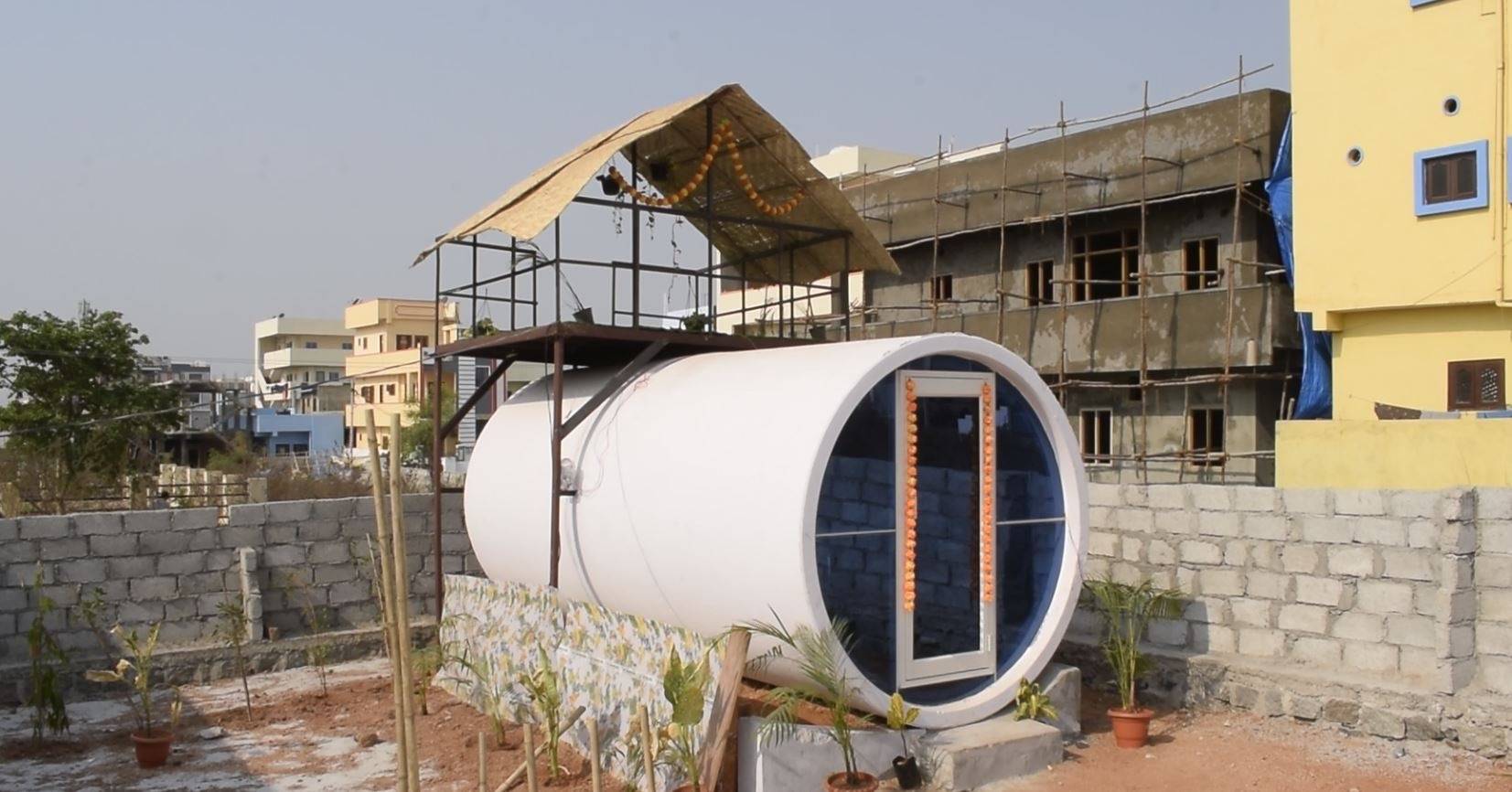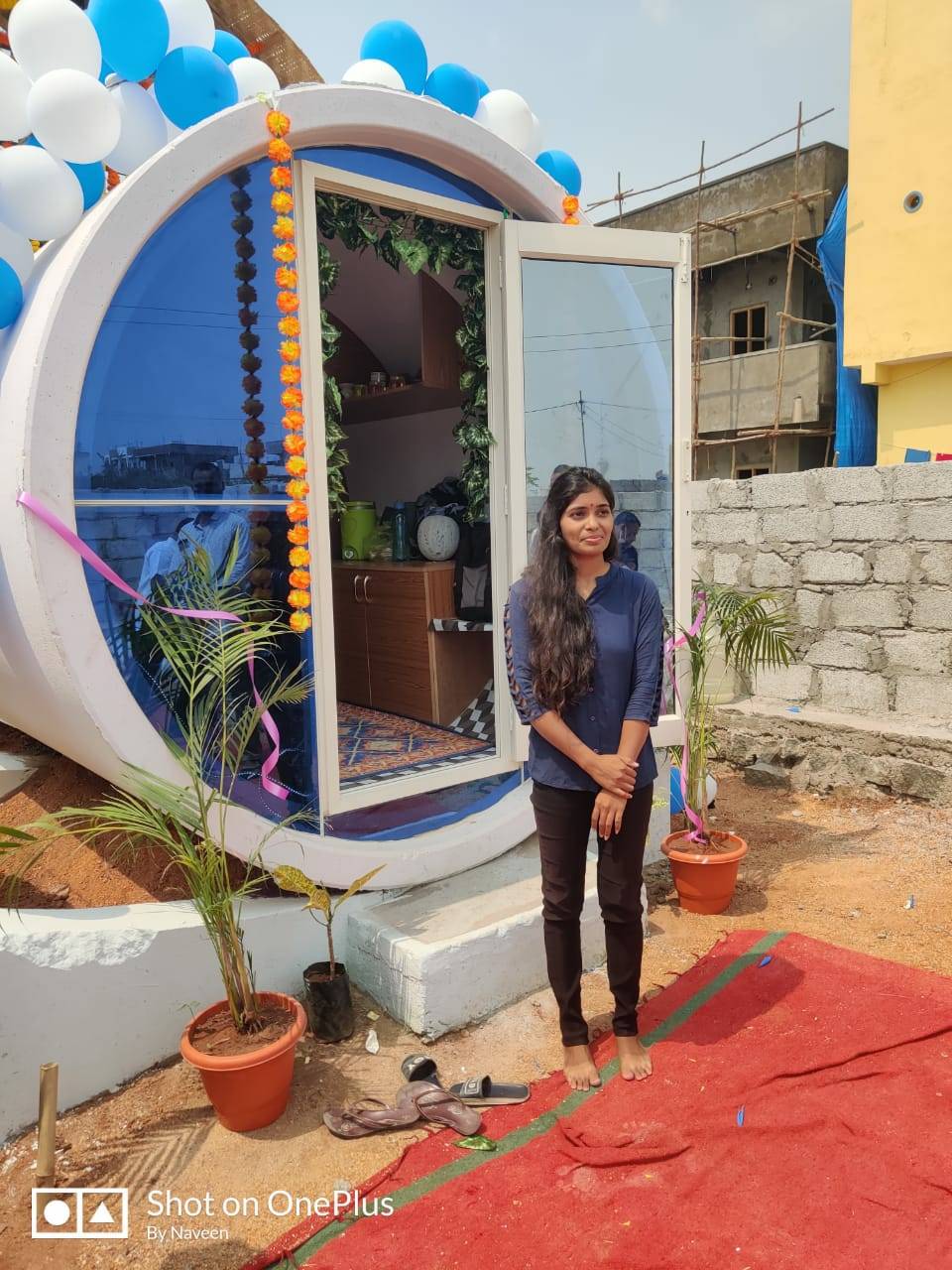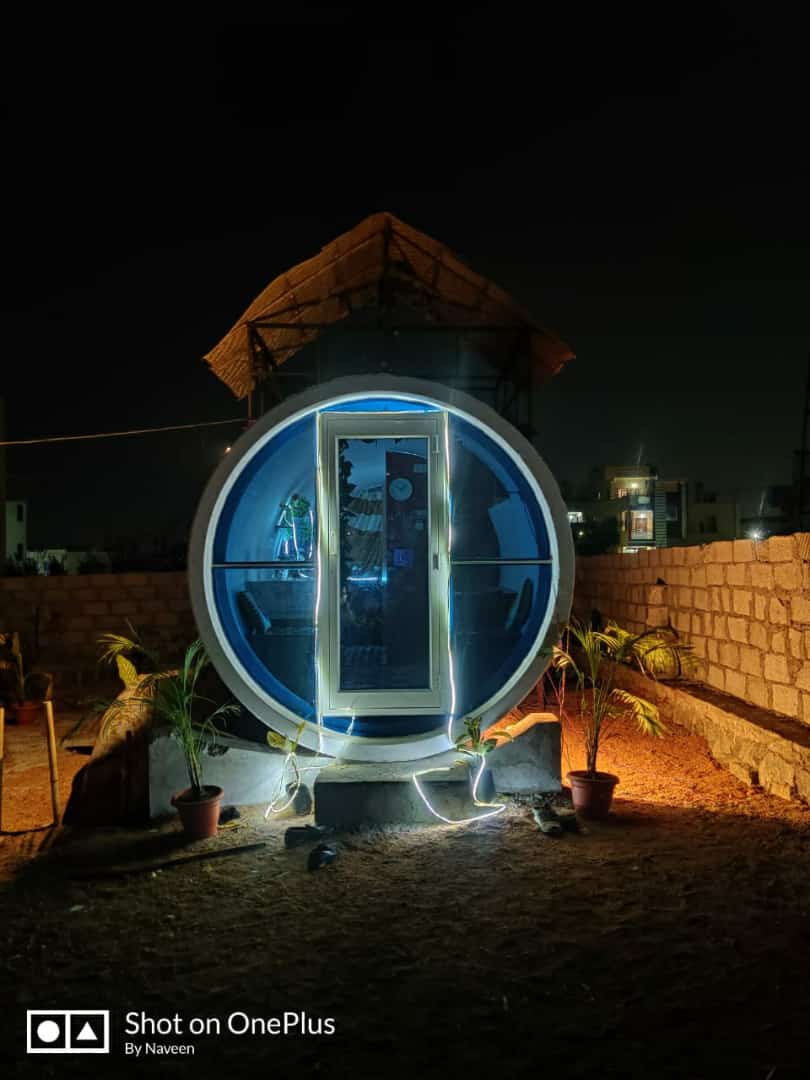A study published in 2019 suggests that India is one of the fastest-growing countries in the world. However, the same study also says that over 63 million people did not have access to adequate housing facilities.
While many live in temporary houses such as straw huts or shanties, others live in discarded shipping containers that are not suitable for warm weather conditions. This forces them to have to continuously relocate or rebuild their homes.
To address this issue, Perala Manasa Reddy (23) a resident of Bommakal village, Telangana has innovated OPods, a low-cost housing solution.
What’s more? They are made using large sewage pipes made of steel, concrete and cement.

“The pipes were procured from a manufacturer in Telangana who was willing to customise the their size according to my need. Though they are circular, spacious enough for a family of three, and can be constructed as a 1BHK, 2BHK or 3BHK, depending on the user’s requirements,” says Manasa, a civil engineering graduate from Lovely Professional University (LPU), Punjab, adding that the structure can be built within 15 to 20 days.
She has also launched a startup named Samnavi Constructions and hopes to build more low-cost homes across the country. In an interview with The Better India, Manasa explains why she wanted to build the O-Pod, and how she did it.
Understanding the struggles of temporary housing
Born and raised in the small village of Bommakal, Manasa completed her schooling at the Telangana Social Welfare Residential Education Society. After graduating high school she went to pursue civil engineering at LPU.

Manasa says her experience with volunteering for social work in Telangana’s slum areas played a role in her choosing civil engineering. “Here, I witnessed many families, with children, living in temporary houses made of steel sheets and large plastic covers. Some would live in bamboo or prefabricated houses made from shipping containers. But one thing was common between all the families here — they were migrant workers and wouldn’t live in these houses for more than one year,” says Manasa, adding that they vacate these homes because the area gets too hot during the summer, or floods during the monsoon.
While she noticed these problems during her first year of college, she never got the opportunity to start working on a solution. However, in March 2020 when she was pursuing her final year of engineering from home, she had enough time to design and plan a solution.
“There were times when I noticed homeless people taking shelter in sewage pipes placed on the side of the road. I wondered if I could modify the size to suit the needs of a family so that they can have adequate space for a permanent home,” says Manasa.
The idea to make a Pod-style home was inspired after doing months of research on low-cost housing options found in Japan and Hong Kong. Apart from this, she also read several research papers online to understand more about building low-cost homes in a small space.
Designing the prototype
By the end of 2020, once the COVID-19 lockdown was eased, Manasa approached a manufacturer of sewage pipes in Siddipet, Telangana. With their help, she was able to procure one lengthy pipe.
“The company, whom I do not wish to name, agreed to help me with my project and provided me with a pipe which was made using two of their regular ones. This added more space to the pod-style home I wanted to build,” says Manasa, adding that she also ensured the pipe was tall enough for a person to stand inside and that it was given a coating of white paint to reflect heat and keep the home cool.
To purchase the pipe and other raw material including door and window frame, as well as bathroom and electrical fittings, Manasa borrowed Rs 5 lakhs from her mother.
“My father passed away when I was in Class III and since then, my mother has provided for both me and my younger sister. To ensure we had a regular income, she took up paddy cultivation the same year my father passed away, which she carries on till today. She supported me wholeheartedly in my project and took a loan to fund it,” says Manasa.
The construction began on 2 March, 2021, at a plot provided to Manasa by her relative. By 28 March, a 1 BHK O-Pod house was ready.
“The house is 16 ft long and 7 ft tall. It has a small living room, a bathroom, kitchen and sink, and a bedroom that can house a queen size mattress,” says Manasa.

Bagging 200 orders
To test whether the house was livable, she convinced a migrant worker who was working as part of the construction team to stay there for seven days.
“We provided him with electricity, water supply, and even food. He enjoyed his stay but had some feedback for us regarding placement of the bathroom, adding more ventilation with windows and more which will be incorporated into the future projects,” says Manasa.
On the same day as the launch of the O-Pod house, Manasa launched her company, Samnavi Constructions, with Naveen Reddy, a business management student from LPU. Manasa is also working on designs of 2,3 and 4BHK O-pod houses.
So far, she has received over 200 orders from various states including Kerala, Tamil Nadu, Andhra Pradesh, and Odisha to construct the O-Pod houses. Owing to the lockdown and COVID-19 restrictions, she is yet to start work on these.
If you wish to get in touch with Manasa, you can visit Samnavi Construction’s website.
Edited by Divya Sethu
No comments:
Post a Comment